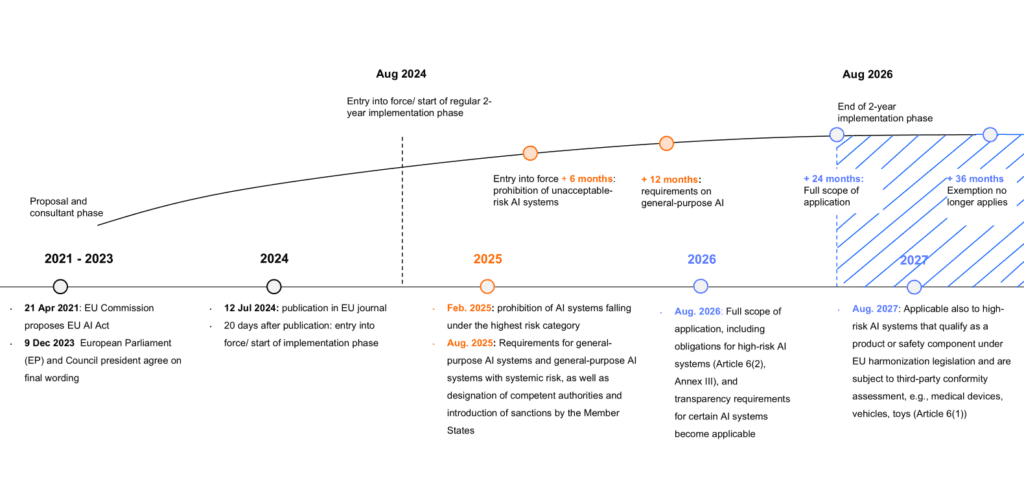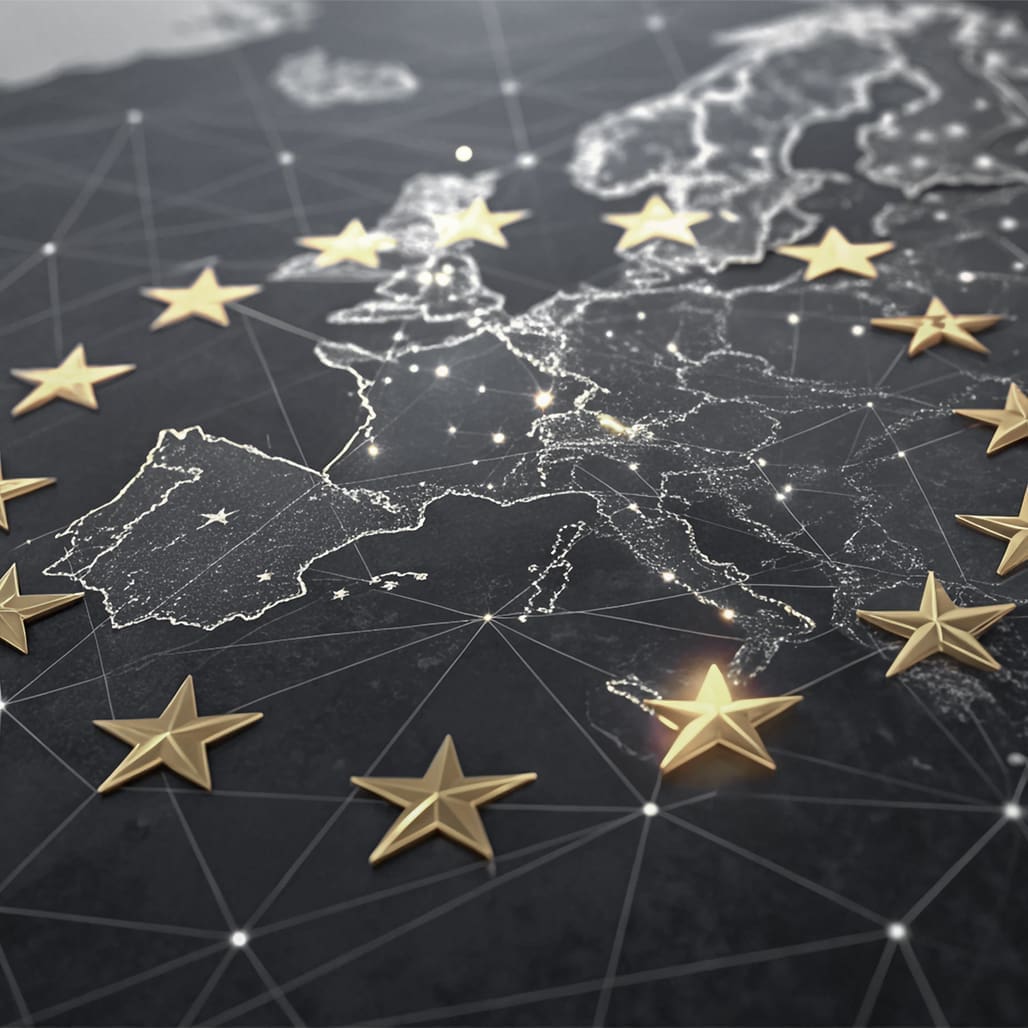Navigate the EU AI Act – Stay Ahead in AI
Gain clarity, ensure compliance and turn regulation into a competitive advantage.

Understanding the New Era of AI Governance
The EU AI Act is redefining how organizations utilize artificial intelligence by providing a clear framework that aligns innovation with ethical and regulatory standards. By understanding these guidelines, businesses can maximize the potential of AI while ensuring compliance with evolving rules.

"The EU AI Act isn’t a brake —
it’s the steering wheel. Build trust-first AI now to scale faster and safer."
Who will be affected?
The EU AI Act applies to any organization, regardless of location or size, that provides, deploys, or imports AI systems into the EU market or whose AI systems impact individuals within the EU. Exemptions exist for certain minimal-risk applications and free/open-source software unless systemic risks are present.
When will it apply?
- Aug. 2024: Entry into force
- Aug. 2026: Majority of EU AI Act becomes applicable 24 months after publication
Specific additional deadlines:
- Feb. 2025: AI systems falling into highest risk category are prohibited
- Aug. 2025: Governance requirements and obligations for General Purpose AI become applicable
- Aug. 2027: application to systems which are already regulated by EU law (e.g. medical devices, industrial machinery)
The EU AI Act came into force in August 2024 and will gradually become applicable over the next 36 months

What is included?
Deploying a risk-based approach to classify AI systems into four risk categories and defining obligations for entities depending on categorization.
Risk classes in the EU AI Act at a glance:

Governance and enforcement
- The EU AI Office coordinates EU-wide application of the AI Act sets codes of practice for GPAI (Global Partnership on Artificial Intelligence) and monitors systemic risks.
- National authorities, handle day-to-day enforcement (audits, corrective measures, fines), manage complaints, and order withdrawals/recalls; run regulatory sandboxes.
Sanctions regime with three categories:
- Use of prohibited AI
- Up to 35 mio. EUR or 7% of worldwide turnover (whichever is greater)
- Failure to comply with transparency & data governance requirements
- 15 mio. € or 3% of worldwide turnover
- Providing incorrect information
- 7.5 mio. € or 1.5% of worldwide turnover
Conformity and standards High-Risk AI
- Conformity and standards (high-risk AI). A conformity assessment is required before market placement. Using harmonized standards gives presumption of conformity; third-party assessment by a notified body is required in specific cases. Providers must register high-risk systems in the EU database before market placement.
- Post-market monitoring: Providers run post-market monitoring and report serious incidents; deployers cooperate and report issues encountered in use.
Seize the Opportunity: What the EU AI Act Means for You
The EU AI Act establishes a robust regulatory framework, classifying AI systems by risk and defining clear obligations for providers, users, and general-purpose AI developers.
By applying the requirements, you can leverage AI and be confident that you are protecting your employees, customers, and partners from potential negative consequences.
How We Empower Your AI Journey
At Eraneos, we combine in-depth expertise with proven methodology. Our pragmatic approach delivers risk-oriented, audit-proof solutions that really work in practice. We provide support in the following areas and many more:
- Support in classifying your AI systems
- Estimation of follow-up efforts depending on the classification of the AI systems and creation of decision options
- Consideration of the requirements for the development and use of AI systems already when designing the use cases
- Ensuring AI competence in accordance with Article 4 (initial training)
- Regulatory-compliant documentation and ensuring auditability
- Codes of conduct and governance mechanisms (voluntary for non-high-risk AI systems) in line with the EIOPA AI governance principles
- Ensuring an approval process for AI solutions before they are used in production

A deeper look at the Risk categories

Let’s create sustainable change together.

Stefanie Förster
Principal

Jan-Philipp Krüger
Manager

Thorge Meinen
Senior Consultant

Manuel Maier
Senior Manager